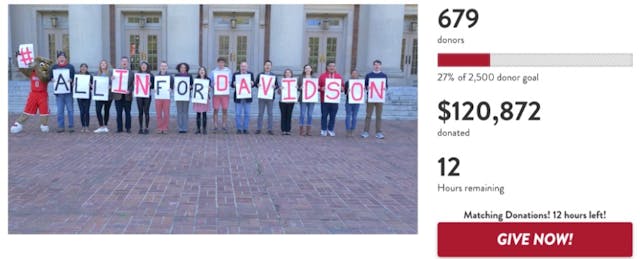You’re home from work. You walk through the door, glance at the mail and see the logo of your alma mater. Opening the letter, you read a request to donate, again, by placing a check in the return envelope. You could give, but something about this ritual feels off-putting. Kestrel Linder, co-founder of GiveCampus, sums it up: “Giving has become far too transactional.”
Linder and his co-founder, Michael Kong, want to change this. Frustrated by their own experience with alumni solicitation—and the realization that schools increasingly rely on philanthropic support—they created a fundraising platform that leverages crowdfunding and social networks “to make giving more social.” And they’re doing just that: Washington, D.C-based GiveCampus announced today that, in just over a year since the company’s launch, 20,000 donors have used its platform to donate a combined $10 million to schools.
Linder says he wants to help institutions cultivate a “culture of philanthropy” among small- and mid-size donors. “For people giving less than $10,000 to $100,000, depending on what school they went to…there’s not really an experience there. There’s nothing social; there’s nothing interactive; there’s nothing personal.”
A Social Spin
Any nonprofit educational institution—higher education or K-12, public or private—can run campaigns on GiveCampus. Anyone—students, alumni, parents, friends, faculty or staff—can submit a campaign for schools, which must review and approve campaigns they want to go live. And as with any fundraising campaign, individuals and institutions hustle to spread the word.
But here’s the twist: After giving to a campaign, a donor can also add a “personal plea” video, “follow” friends and see their activity, share the campaign through social media and email integrations, or publicize a matching donation pledge directly to the campaign page. These “advocate” donors use the platform’s tools to track their impact—how many clicks to the campaign they generated, how many clicks led to additional donations, and the total amount of additional money raised. Schools using GiveCampus typically pay through a subscription model that allows them to raise up to a certain amount of money on the site.
Linder and Kong launched GiveCampus last March, and the company was part of Y Combinator's 2015 summer cohort. Since its launch, GiveCampus has hosted over 300 campaigns with 70 schools, with two to three new schools joining per week, Linder says. More than half of GiveCampus donors made either their first gift to the school, their first gift to the school in several years, or the largest gift they’d made to the school.
A New Class of Donors
Aaron Westfall, a senior director of development at the University of Michigan, thinks GiveCampus could be a viable solution for engaging smaller donors. “If annual giving from an alumni population hovers around 20 percent, it is extremely expensive and time-intensive to develop the other 80 percent who have yet to give to an institution or have lapsed more than four or five years in giving,” Westfall says. But he also notes that most of GiveCampus' partners so far appear focused on annual giving efforts, and that if the company were eventually to move into the space of major gifts, the model could encounter more difficulty. “GiveCampus may find success at developing new donors for an organization's major gift pipeline, but it is difficult to imagine outsourcing relationship development for major gifts."
Holy Cross, a college in Worcester, Mass. with 2,900 students, is one school that’s seen success with the platform. The college used GiveCampus in its first-ever “Weekend Fundraising Challenge,” for which the alumni Class of 1982 pledged to give $500,000 if the college received gifts from 2,500 supporters in a weekend. The challenge ended up becoming GiveCampus’ most successful campaign, bringing in the most donors (6,226) to a single campaign on the platform. One-third of traffic to the challenge was generated by email or social media shares.
For Linder and Kong, the work is just beginning. While GiveCampus has shown success in reaching smaller donors, Linder says most schools still have a long way to go to engage new or lapsed alumni donors. “People don’t view schools as charity. The onus lies especially on schools doing a better job telling their story, connecting the dots for people.”


